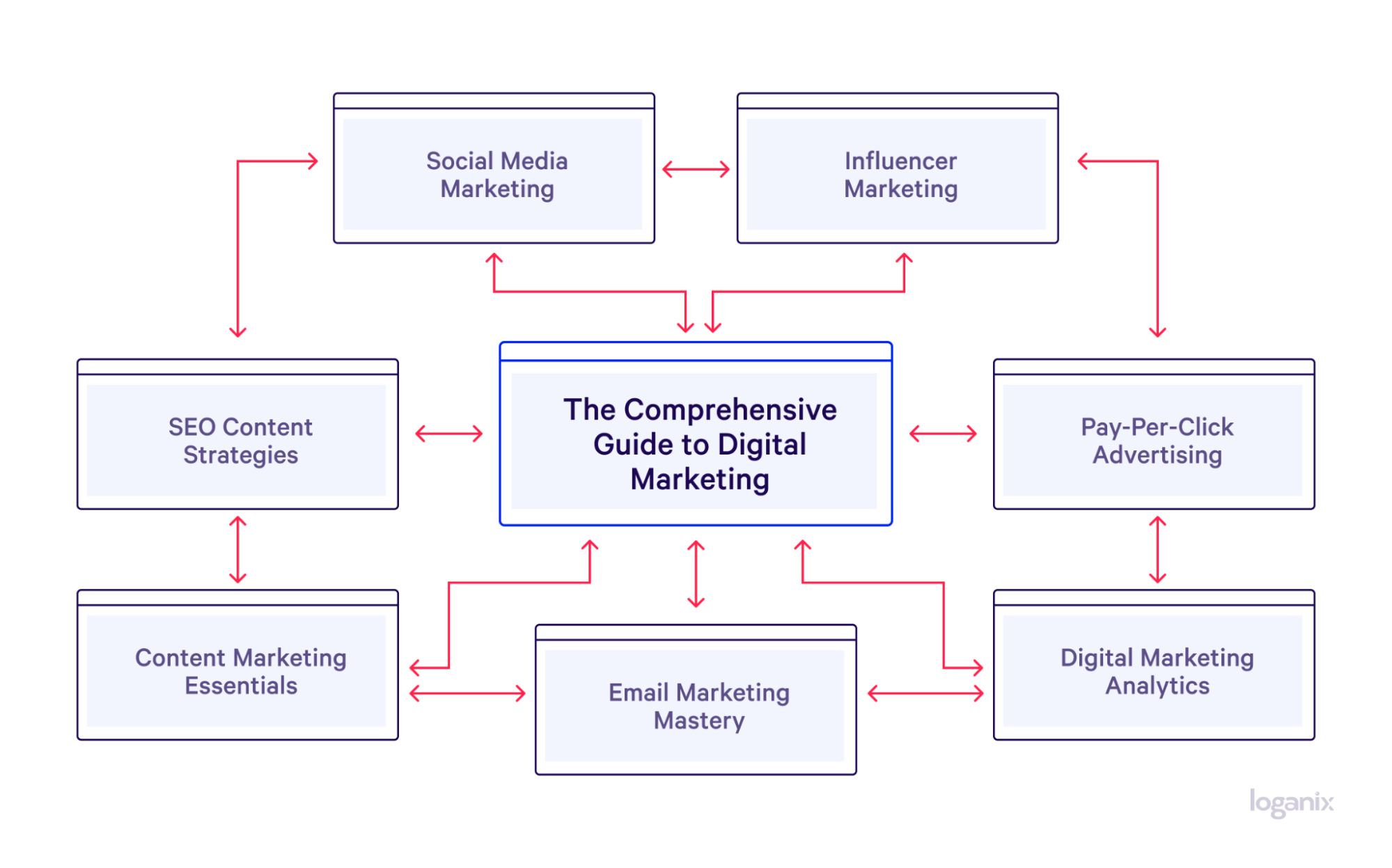What Is a Pillar Page? SEO Content Pillars Explained

Hand off the toughest tasks in SEO, PPC, and content without compromising quality
Explore ServicesContent marketing 101: getting noticed… but with the level of competition increasingly heating up, how?
Pillar pages—an excellent addition to any website’s SEO toolkit.
To help you wrap your head around pillar pages, by the end of this read, you’ll
- know the answer to the question, “What is a pillar page,”
- uncover pillar pages’ important role in boosting your website’s visibility,
- and have a firm grasp on the anatomy of pillar pages and how they are different from your run-of-the-mill blog post.
What Is a Pillar Page?
In architecture, it’s the pillars that keep a structure strong and steady. The same goes for your website’s content strategy. Enter the pillar web page: a comprehensive, all-encompassing resource that tackles a core topic head-on. It’s the central column of your content structure, supporting and connecting all related topics.
And the related topics, where do they fit in with pillar pages?
Think of it this way: if the pillar page offers a broad, 30,000-feet overview of a major topic, then the related topics are like viewing it from a 5,000-feet level. These are known as topic clusters. They delve into specific aspects related to the pillar page, providing more detailed insights while still being connected to the overarching theme.
Learn more: Interested in broadening your SEO knowledge even further? Check out our SEO glossary, where we’ve explained over 250+ terms.
Real-World Pillar Page Examples 👉

Imagine you’re writing a post on the concept of “digital marketing.” It’s the perfect topic for a pillar page—broad, non-specific, 30,000-feet.
Branching off from the pillar page are your topic clusters, comparable to the beams that connect back to and support the central column. Topic cluster posts—the subtopics—might cover concepts like “social media marketing,” “email marketing,” “SEO content strategies,” and so on. Each topic cluster post provides a more focused, in-depth 5,000-foot look at specific facets of digital marketing.
Learn more: how to create topic clusters.
Why Are Pillar Pages Important?

The architectural harmony between the pillar page and its topic clusters not only strengthens the overall structure of your website’s content but also creates a cohesive and comprehensive user experience where every piece of content is interlinked and adds value to the overarching theme.
Let’s dive deeper into this thought by exploring the importance of pillar pages.
Supporting SEO Efforts with Keyword-Dense Content
Well-written pillar pages aren’t just repositories of information. They’re an SEO goldmine. Because they dive deep into a topic, touching on a spectrum of ideas, they naturally contain a whole swathe of keyword opportunities, potentially boosting your site’s relevance and authority on a subject. They become hubs of keyword diversity.
But the benefits don’t stop there. These pages don’t just rank for one or two keywords. They can rank for tens, even hundreds, of long-tail keywords. This is because they answer numerous questions and cover multiple angles of a topic, making them highly relevant to a wide range of search queries.
Keeping Readers Hooked and On-Site
A well-crafted, engaging, and informative pillar page keeps your readers scrolling, absorbing, and, most importantly, from an SEO perspective, staying on your site. Lower bounce rates, higher time-on-page, and a greater chance a reader will transition from a tire kicker to a paying customer. It’s a thing of beauty.
Establishing Topic Authority
Alrighty. Let’s talk strategy—rather than chasing high search volume keywords and publishing content on random topics in hopes that something will stick, put pillar pages to work and treat them as your content strategy’s backbone. Think of them as the central framework around which everything else revolves. A methodical approach that builds a foundation of expertise in your chosen niche.
The beauty of this approach is twofold.
Firstly, it positions you as an authority in your field. When visitors find your pillar page, they don’t just see a collection of keywords strung together—they see a well-thought-out, expertly crafted resource. This builds trust and credibility, which are invaluable in the digital world.
Secondly, pillar pages create a natural hub for your other content. As you develop more specific, targeted pieces (your topic clusters), they can be linked back to and from your pillar page, creating a cohesive, interlinked content ecosystem.
Boosting Topic Clusters with Link Juice
Leading on from what we just touched on, if a pillar page performs well—establishing itself at the top of the search engine results pages (SERPs)—it becomes a powerhouse, radiating, yup, authority and trust. The benefit? It shares that power with its topic clusters through internal linking.
Each link is like a vote of confidence, passing a splash of SEO juice (link equity) from the pillar page to the topic cluster posts. This helps your topic cluster climb rankings and creates a seamless journey for your readers. They hop from one related topic to another, all guided by your pillar page. It’s a win-win: your readers find value and depth, and your site’s overall ranking gets a nice little nudge up the SEO ladder.
Constructing a Pillar Page

A successful pillar page has a clear, logical structure. Here’s how you can create a pillar page that captivates your audience and strengthens your SEO efforts:
Introduction: Setting the Stage for Exploration
- Broad overview: Begin with a broad topic overview, highlighting its importance and relevance.
- Engagement hook: Use a compelling hook that promises comprehensive coverage and valuable insights.
- Roadmap preview: Give a preview of the subtopics (topic clusters) you’ll cover, establishing the pillar page as a central hub.
Navigation and Accessibility: Ensuring a Smooth Experience
- Table of contents: Include a clickable table of contents at the beginning for easy navigation.
- Section linking: Within each section, provide links back to the table of contents and other relevant sections, facilitating smooth navigation through the page.
Core Sections: Building the Pillars of Knowledge
- Segmented yet connected: Divide the topic into interconnected sections, each acting as a mini-guide within the larger topic.
- Deep dives with internal links: In each section, provide a deep dive into the subtopic and include an internal link to related topic cluster content for further reading.
- Progressive detailing: Start with broader concepts and progressively get more detailed, guiding the reader through a logical flow of information.
Visual Elements: Enhancing the Journey
- Interactive elements: Incorporate interactive elements like clickable infographics or expandable sections that allow readers to explore subtopics in more depth.
- Visual roadmaps: Use visual cues like flowcharts or diagrams that map out how each section connects back to the main topic, reinforcing the pillar structure.
Conclusion: Tying It All Together
- Summarize key takeaways: Summarize the main points covered, reinforcing the comprehensive nature of the pillar page.
- Call-to-action for exploration: Encourage readers to explore the linked topic clusters for more detailed information, emphasizing the interconnectedness of your content.
Pillar Pages FAQ
Q1: What’s the Difference Between Pillar Pages and Landing Pages?
Pillar pages are detailed, informative content pieces that cover a broad topic comprehensively and link to related subtopics, aiming to educate and engage readers. In contrast, landing pages are designed with a singular focus, typically for marketing or sales purposes, guiding visitors towards a specific action like signing up or purchasing.
Q2: How Often Should You Update a Pillar Page?
Pillar pages should be updated regularly, at least once a year, to ensure the information remains current, relevant, and in line with the latest industry trends and search engine algorithms. Frequent updates help maintain the page’s authority and ranking, as fresh, up-to-date content is favored by search engines and valued by readers.
Q3: How Do Pillar Pages Fit into a Mobile-First Indexing Strategy?
Pillar pages are crucial in a mobile-first indexing strategy, as they provide a streamlined, comprehensive resource easily navigable on mobile devices. With more smartphone users accessing content, a well-structured pillar page ensures a seamless and engaging mobile experience, keeping your content accessible and user-friendly in a mobile-centric digital landscape.
Conclusion and Next Steps
If you’re eager to put your newfound pillar page knowledge into action and elevate your website’s SEO, Loganix is here to help.
With a comprehensive range of SEO services, from detailed audits to bespoke content strategies, Loganix is equipped to guide your SEO journey every step of the way.
Ready to boost your site’s visibility and authority?
🚀 Explore Loganix’s SEO services and take the first step towards a stronger, more effective online presence. 🚀
Hand off the toughest tasks in SEO, PPC, and content without compromising quality
Explore ServicesWritten by Brody Hall on January 29, 2024
Content Marketer and Writer at Loganix. Deeply passionate about creating and curating content that truly resonates with our audience. Always striving to deliver powerful insights that both empower and educate. Flying the Loganix flag high from Down Under on the Sunshine Coast, Australia.





